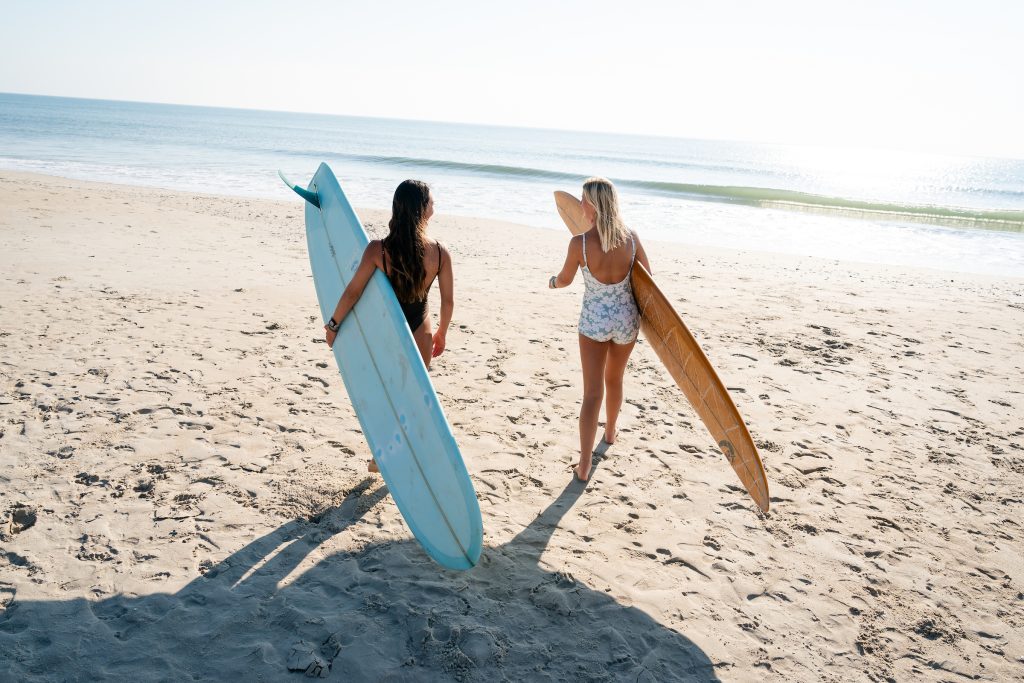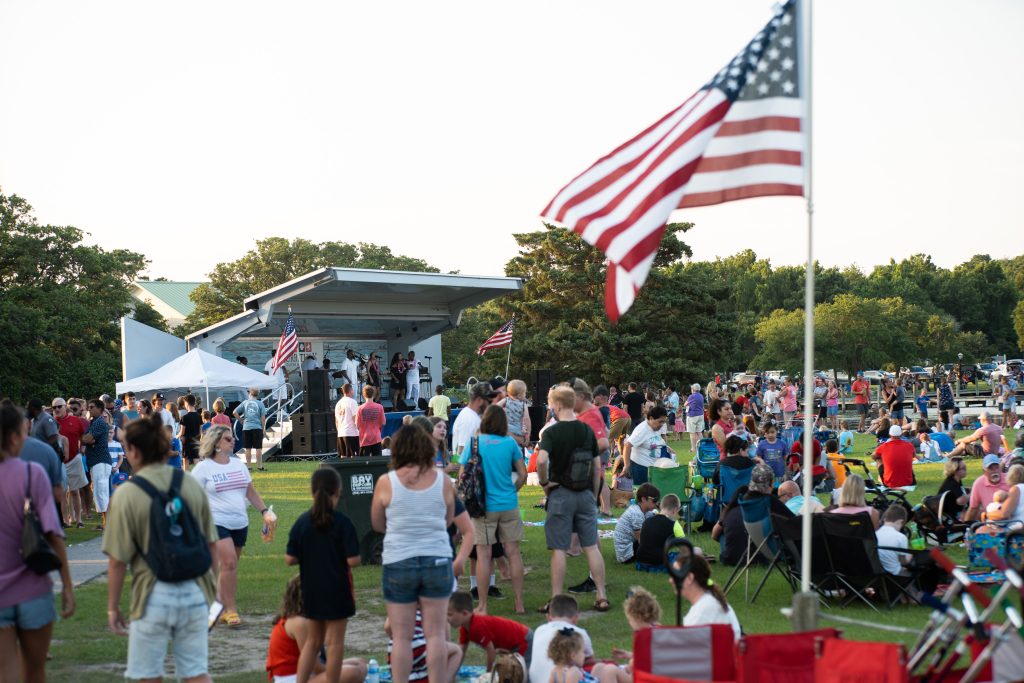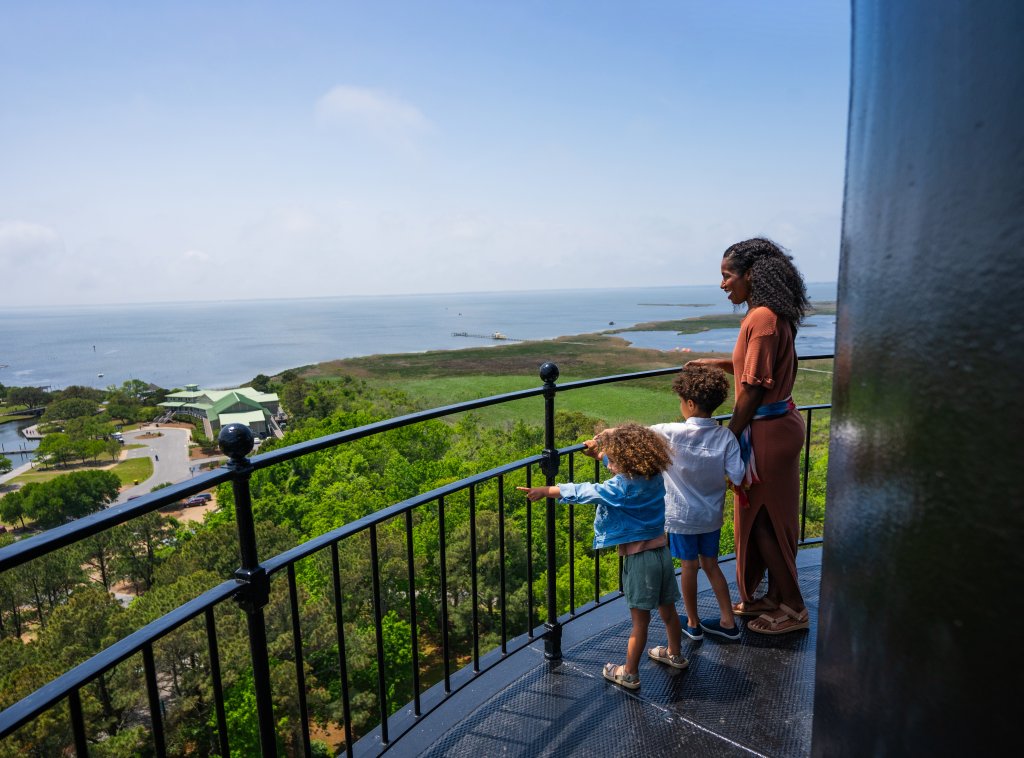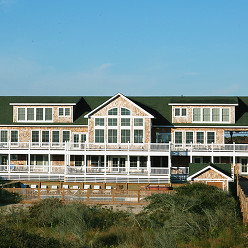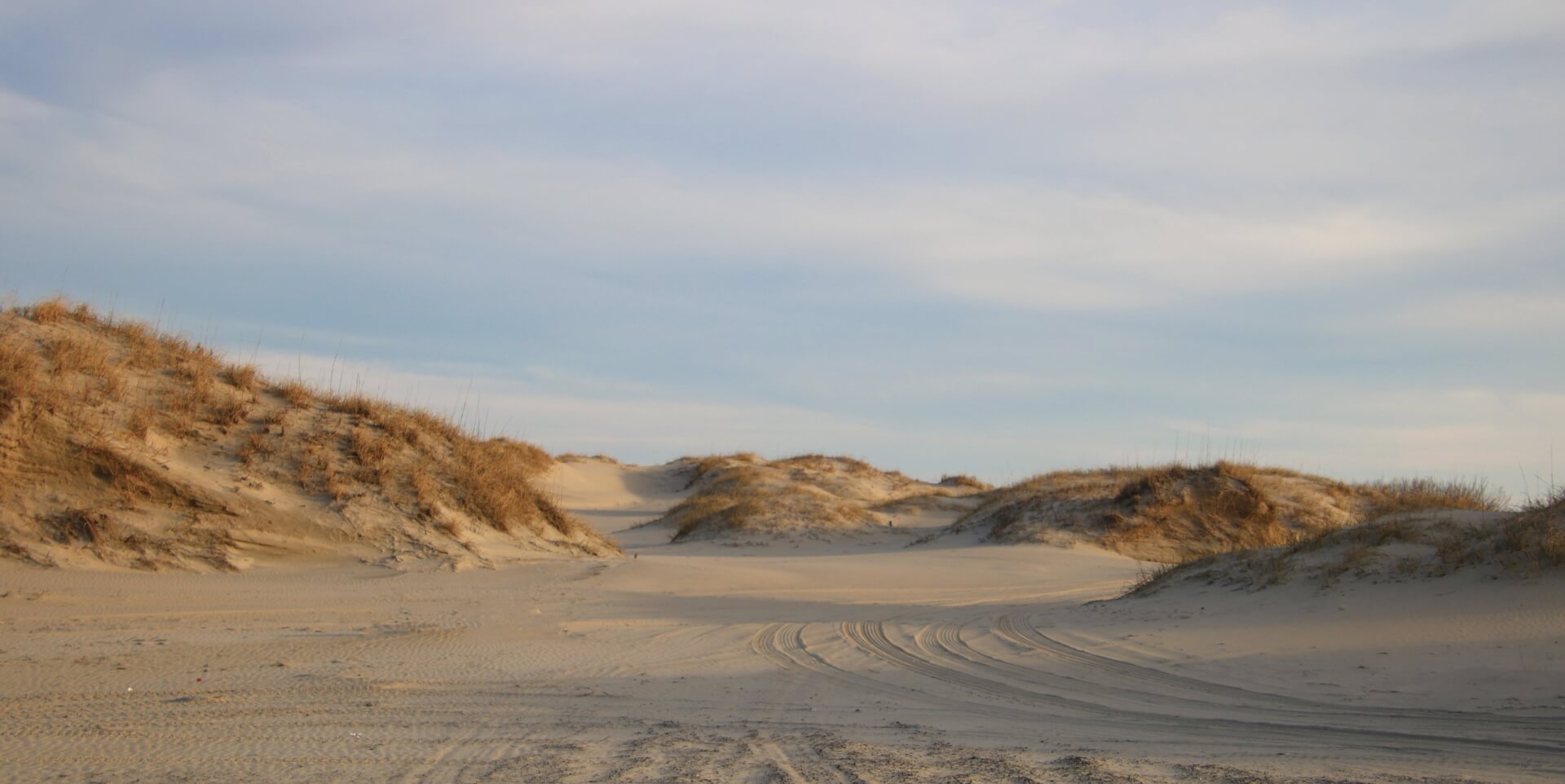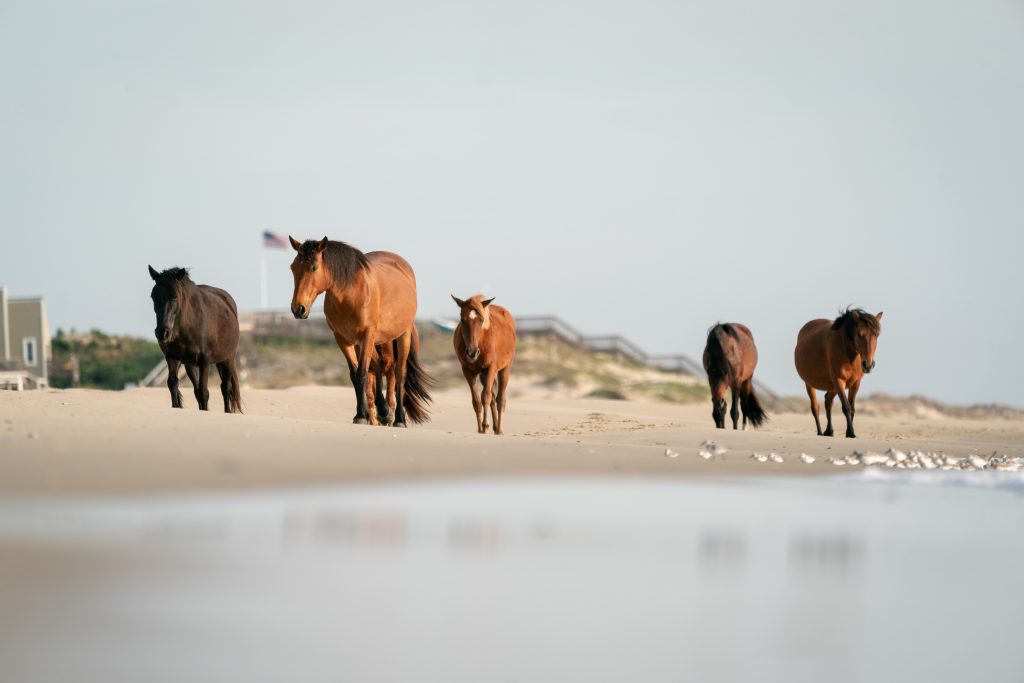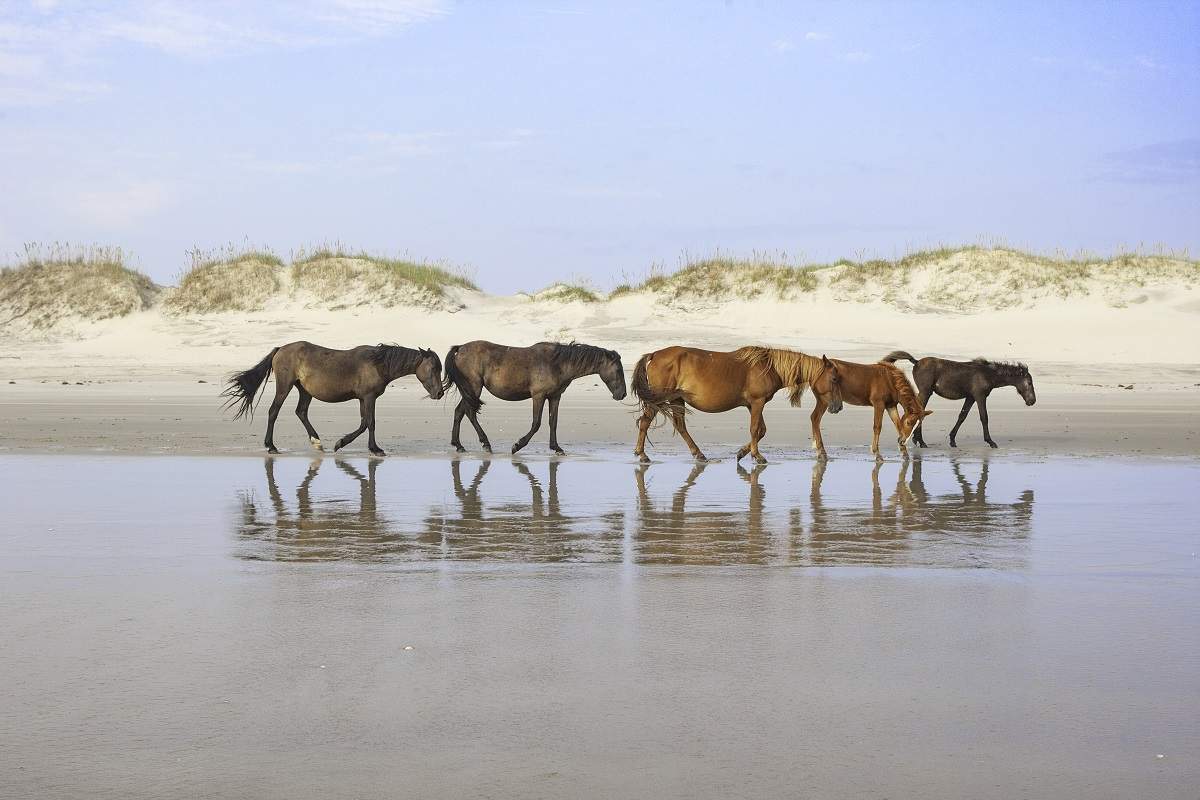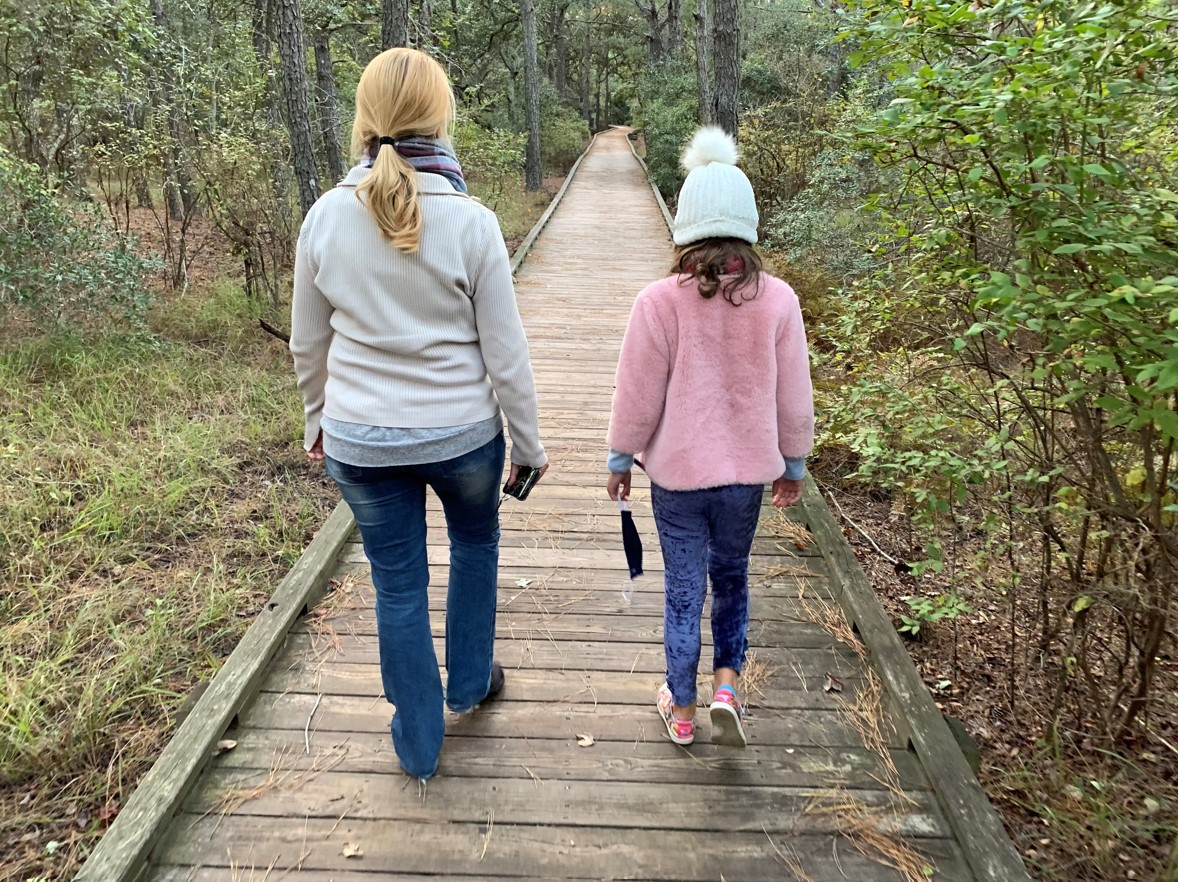The Surprising Story of the Sand Your on your Feet
Ahhh, sand, such a seemingly simple beach pleasure. Something warm and clean to sink our bare feet into and sift our fingers through. A marvel of cohesion to pile up into shapes limited only by our imagination. The ultimate playground and resting place.
Simple it may seem, but this basic Northern Outer Banks ingredient is a complex substance. Those little grains that end up everywhere from our snacks to our car seats to our crisp clean sheets are actually the final chapter in an epic journey.
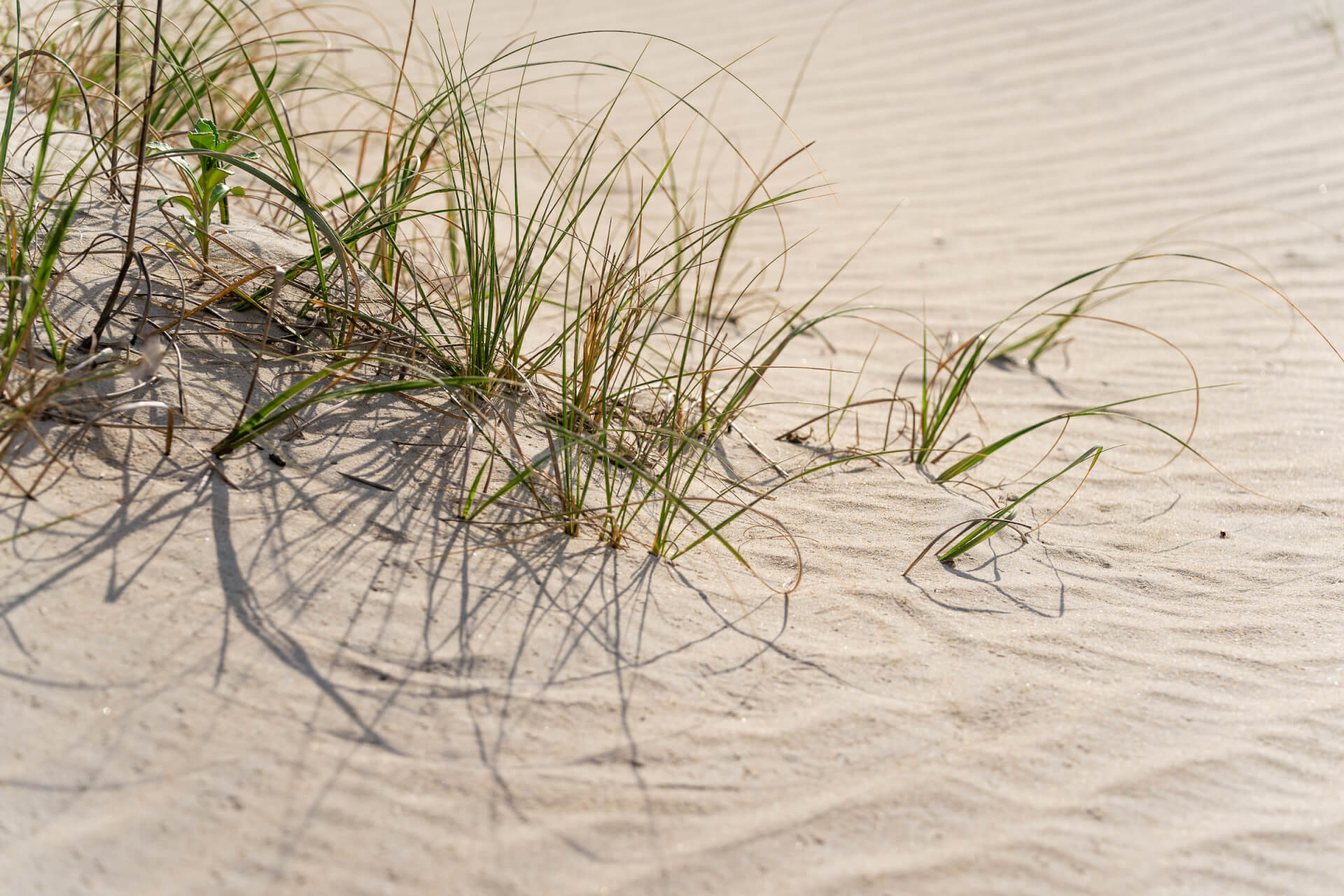
What is Sand?
Outer Banks sand is a product of the mountains. As mountain rocks and boulders erode via rain, wind, ice and gravity over millions of years, they break down into smaller and smaller pieces, from boulders to gravel to sand and silt. These particles are carried downstream via streams and rivers to the sea, getting ground and worn down along the way in nature’s version of a rock tumbler. Each grain of sand we see on the beach is basically just a very small bit of rock.
Scientists believe that the sand on the Outer Banks likely started way up in the Appalachian Mountains. It was carried down through the Chesapeake Bay watershed, eventually making its way south via longshore currents. By the time it landed on the beaches of North Carolina, it had been shaped and sorted by rivers, waves and wind.
Technically, sand is any particle between 0.0625 and 2 millimeters in size. It’s mostly made up of quartz, a hard, light-colored mineral that resists breaking down — perfect for surviving such a long journey. In Outer Banks sand there is also feldspar and chert, along with heavy minerals like garnet, zircon and tourmaline. Some of our sand is also tiny shell fragments.
The sand on beaches all around the world is different because it comes from different sources, including volcanic rock, shells and coral. By the way, people who collect sand as a hobby are called arenophiles, and creatures that thrive in sandy environments are known as psammophiles.
Barrier Islands and Natural Sand Dunes
The Outer Banks are not just any stretch of coastline — they are part of a fascinating formation called a barrier island. These narrow strips of land are made almost entirely of sand and run parallel to the shore, separated from the mainland by sounds and marshes. The Outer Banks barrier islands are shifting, ever-changing landforms affected by wind, waves and tides.
In a land formed by sand, it’s not surprising to find an abundance of sand dunes. The Outer Banks has areas of natural, Sahara-like sand dunes called medanos, massive asymmetrical shifting hills of sand that stretch far and wide across the landscape.
The Outer Banks medano most people are familiar with is Jockeys Ridge. On The Northern Outer Banks, these giant migratory dunes can be seen in Carova at Lewark’s Hill and Penny’s Hill. Because medanos are sparsely vegetated, they are constantly shifting with the wind. In the last century ever-shifting Penny’s Hill and Lewark’s Hill swallowed whole villages on The Northern Outer Banks, including the little villages of Seagull and Penny’s Hill. As the dunes continue to shift, remnants of the village are occasionally uncovered again.
Taming the Sand: The Oceanfront Dunes
Prior to the 1930s, the Outer Banks did not have the prominent oceanfront dune line it has today.
During the Great Depression President Franklin D. Roosevelt’s New Deal brought massive infrastructure projects to life, including one that reshaped the Outer Banks. With help from the Works Progress Administration (WPA) and the Civilian Conservation Corps (CCC), workers built sand fences and planted grasses to create manmade dunes to stop the shifting sands.
Thousands of young men came to the Outer Banks to build these dunes by hand. They dug, shoveled and planted millions of sea oats, grasses and shrubs to hold the sand in place. This work created the dunes that now stretch along the entire Outer Banks oceanfront, protecting homes and roads from flooding.
These days, not everyone agrees that the oceanfront dunes were a good idea, claiming that they alter natural water flow, sometimes worsening erosion and flooding in other areas. However, everyone agrees that without the dunes there would have been no rise to the Outer Banks beach tourism economy we all enjoy today.
Stay Off the Oceanfront Dunes
When you visit the Northern Outer Banks, the sweeping sand dunes you see aren’t just beautiful — they are vital to the health and resilience of our beaches. These dunes act as natural barriers against storms and tides, shielding inland areas from flooding and erosion while providing habitat for unique plants and wildlife. Without them, the coastline would be more vulnerable to damage, and the delicate beach ecosystem would be disrupted. Protecting our beaches and dunes is essential to preserving the very character and natural wonder that draws visitors here year after year.
They are protectors of property that act as buffers between the ocean and the land and absorb the impact of storms and ocean overwash. The grasses planted on dunes, such as sea oats and American beach grass, have deep root systems that help trap and stabilize the sand.
So when you are at the beach, think of the dunes as Mother Nature’s seawall. They may look inviting to climb and run down, but they play a serious role in coastal protection. Please don’t climb on the beachside dunes and never let children play on them.
What Can You Find in the Sand?
One of the joys of a beach walk is stumbling across treasures in the sand. Keep your eyes peeled for:
- Sea glass – Bits of broken bottles that have been tumbled smooth by waves and sand.
- Shells – On The Northern Outer Banks you’ll find scallops, whelks, baby’s ears, coquina clams, cockles, moon snails and more. Low tide is best for shelling and look close to the tide line.
- Live Critters – You might discover mole crabs (aka sand fleas) burrowing into the sand in retreating waves or sand-colored ghost crabs dashing to holes in the dry sand. You might jellyfish washed up on the beach. In winter look for mermaid’s purses (skate egg cases) and whelk egg cases.
- Driftwood – Weathered wood that’s taken a long ocean journey.
- Fulgurites – When lightning hits sand, it quickly solidifies sand into a tube or crust of glass. Fulgurites are a typically a little darker than the sand around them and similar to a rock but softer. These can be found in any area of the beach on and on the medano dunes.
Learn Something New at the Beach
Next time you head to The Northern Outer Banks, turn your trip into a learning adventure.
- Collect sand samples from differing beaches around the country and the world to note the color, texture and location of different samples. Research the source of that beach’s sand.
- Compare natural and manmade dunes. How tall are they? What plants grow on them?
- Learn about the tides by observing how the shoreline changes through the day.
- Use online or print field guides to learn the names of plants, birds, critters and shells you find on the beach and on the dunes.
Beach Safety & Stewardship Tips
- Respect the Dunes. Don’t climb on them or pick the sea oats and grasses. The dunes and vegetation are vital to protecting the property behind the shoreline.
- Fill in Holes. Digging holes in the sand is fun, but holes can also be dangerous. Large holes can collapse unexpectedly trapping people under the sand (this happens more often than you would think.) No matter the size hole you dig on the beach, you must refill the holes when you leave. Pits of any depth are dangerous for both wildlife and people, including emergency personnel.
- Protect Feet and Paws. Hot sand is real threat for humans and pets. The sand can reach up to 130 degrees on a summer day, so be sure to wear shoes or flip flops. Leave pets at home during the peak of heat or protect their paws with special pet booties.
- Pick Up Trash. Leave the beach clean and pick up any trash you see. Event little bits of trash like cigarette butts, balloon string and plastic bottle caps are harmful to wildlife. Always clean up after your pets.
Next time you’re enjoying the sandy land that is The Northern Outer Banks, take a moment to appreciate the sand between your toes. It’s more than just a soft spot to lay your towel, it’s a storyteller, a time traveler and a vital part of life on the coast.




